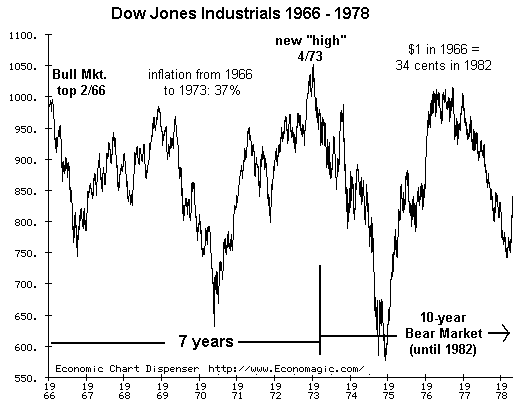Bubble
News!
The tech bubble gets its (w)reckoning
Far bigger voices had offered direr forecasts in recent days, including Citibank’s equity research team with a missive headlined ‘Down the Rabbit Hole’ that warned of a 20% correction in the S&P 500.
DYI: 20%
correction? U.S. stock market is
horrifically overvalued when this bubble pops expect a run of the mill 50%
correction. A 50% dive stocks would
still be marginally overvalued! This
leads to the conclusion stocks in order to be in the bargain category will need
to drop on an after inflationary basis of 60% to 75%. Please note this could very possibly take
more than one round trip illustrated by the 1970’s market.

Wages are stagnant because productivity is stagnant, and productivity is stagnant; American companies invest in apps rather than plant and equipment.
Asia is the main reason for America’s shift away from capital-intensive investments to “capital light” investments such as software. The large Asian economies, China especially, subsidize capital-intensive investments. They view a chip fabrication plant or an auto assembly plant as a public good, and reduce the cost of capital for private companies, just as the US subsidizes sports stadiums and airports.
In short, the American tech sector does a great job of exchanging photos and recipes and family photos, but it doesn’t do much for overall productivity.
By contrast, the United States is drifting towards the export profile of Brazil;
strength in agriculture commodities and energy but overall weakness in high-technology manufacturing and exports.
DYI: Not
just Brazil as a competitor for a commodity driven economy include Russia as
well. This pressure will continue to
build don’t be surprised to see even more anti-Russia rhetoric from the main
stream press [and very possibly Brazil as well].
Without a strong manufacturing base America’s
military super power status will begin to wane as the cost will be impossible
to maintain with only a commodity driven economy. So far I see nothing changing this direction.
That portends the end of the second great tech bubble. But to which sectors should investors rotate? Energy is a bet on oil prices, and the US oil companies are a pricey bet. Financials have underperformed and are likely to continue to underperform. During the first quarter the total assets of US banks actually shrank, something that usually happens in recessions, and business loan volume is flat; if they can’t grow assets, they can’t make money, especially not with a flat yield curve and historically low net interest margins. What S&P calls the “consumer discretionary sector” is 20% Amazon and 7% Home Depot, two well-performing but pricey names. “Consumer staples” have done terribly as customers shift away from high-priced brands to generic substitutes. Technology ballooned to a quarter of the S&P 500’s market capitalization at the end of January, and there aren’t enough locations in the rest of the market to absorb that much market cap. That makes the US stock market dodgy for the rest of 2018.
DYI: My
asset allocation formula shows there are very few places for one’s
dollars. Stocks are priced to the moon;
long term bonds have very little value; gold is trading just barely below its
mean. So by default DYI is holding cash
[short term bonds]. Better values will
arrive I simply do not know when [nor does anyone else].
Updated Monthly
No comments:
Post a Comment